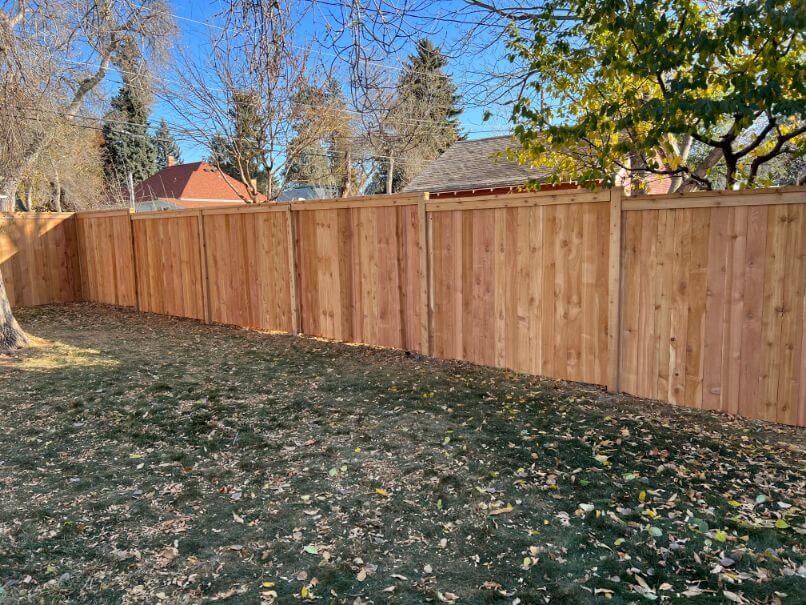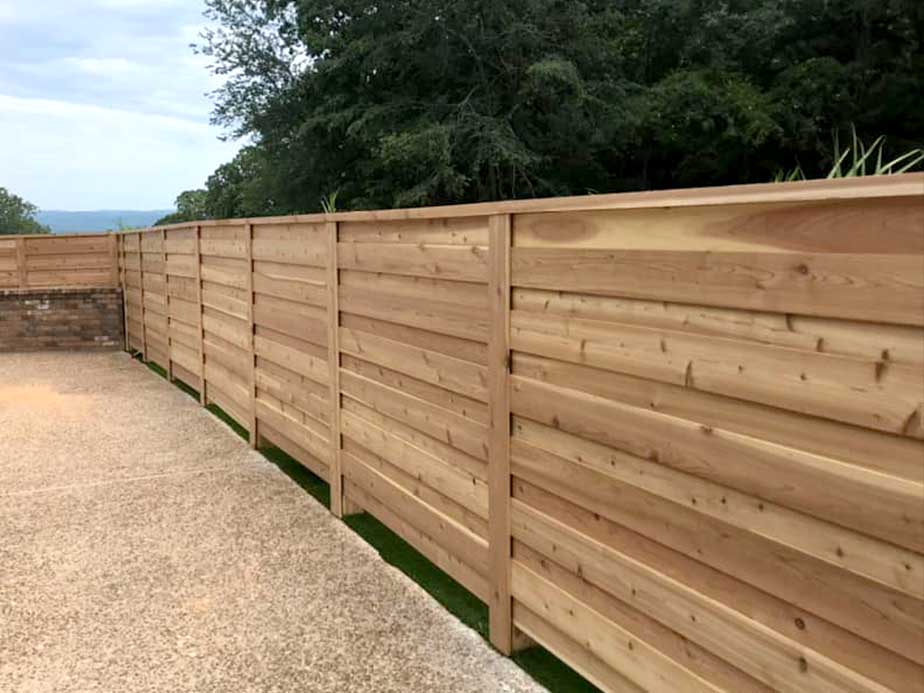All Categories
Featured
Your fencing is revealed to different climate condition year-round, and while it functions as a necessary part of your home, it's additionally among one of the most prone elements when it pertains to weather-related damages. Harsh winds, hefty rainfall, extreme temperatures, and UV direct exposure can all take a toll on your fence's honesty, causing deterioration. There are a few actions you can take to secure your fencing and lengthen its life-span. Here are some efficient techniques to protect your fencing from weather-related damage.
Wood Fencings: While wood is a traditional option for fence, it is prone to warping, insect, and rot damages, particularly in areas with high wetness. Pressure-treated wood or cedar is more sturdy, yet regular upkeep is necessary to keep it in good condition. Vinyl Fence: Vinyl is an excellent choice for those looking for a weather-resistant and low-maintenance fence. It's invulnerable to wetness, will not warp or fracture in the heat, and resists fading from UV rays. Metal Fence: Wrought iron and light weight aluminum are resilient products for secure fencing, yet they require a rust-resistant layer to secure them from deterioration due to wetness. A safety finishing or regular upkeep can stop rust and prolong the life of metal fences. Composite Fence: Made from a mix of timber fibers and plastic, composite fences are highly immune to weather aspects, including moisture, heat, and UV rays. This product provides a balance of sturdiness and visual charm. Selecting a material suited to your environment will give far better security for your fence the long-term.
Seal or Stain the Timber: Applying a high-grade sealer or tarnish to your timber fencing creates a water-proof barrier that stops moisture from going into the timber. It likewise aids shield the timber from UV rays, which can trigger discoloration and drying. Reapply Sealer Routinely: Gradually, the safety barrier of your sealant or tarnish can wear down. Depending upon your climate, it's a good idea to reapply each to 2 years to maintain the wood protected. This therapy will certainly maintain the fencing's appearance, protect against rot, and prolong its life-span.
![]()
For additional security, consider utilizing wind-resistant mesh screens or panels in locations where wind is a significant worry. This added layer can help decrease the force that the wind applies on your fencing.
Inspect Drainage: Make certain that the ground around your fencing inclines far from the posts. Correct water drainage permits water to move far from the fencing, avoiding dampness buildup. Install Drainage Solutions: In areas where drain is a worry, consider adding a French drainpipe or gravel around the base of your fencing posts to reroute water far from the structure. Good water drainage can protect against rot, corrosion, and various other forms of weather-related wear and tear.
![]()
![]()
Concrete Footings: Set fence posts in concrete to avoid them from loosening over time due to dirt disintegration or moving ground. Metal Dental Braces: Adding steel dental braces to fence articles can provide added strength and minimize the risk of leaning or breaking. Enhancing your posts makes certain that your fence will certainly remain in area, even during severe weather.
For wood fencings, carefully wash the surface area with a light detergent to remove dirt and crud. For plastic fencings, make use of a soft cloth and cleaning service to stop build-up. For steel fences, inspect for rust and sand it off prior to applying a fresh coat of paint. Verdict. Your fence is an essential feature of your residential property, and with the appropriate care, it can hold up against the obstacles positioned by the climate. By choosing durable products, doing normal upkeep, and reinforcing weak factors, you can secure your fencing from the elements and prolong its life. Routine inspections, applying safety finishes, and taking actions to control dampness and wind direct exposure will aid make certain that your fence stays solid, useful, and appealing for several years to find.
- Select Weather-Resistant Materials. The materials you pick for your fence can have a significant effect on its capacity to hold up against the aspects. Various products are better furnished to handle certain climate condition. Here's a failure of just how various products hold up versus the weather:
Wood Fencings: While wood is a traditional option for fence, it is prone to warping, insect, and rot damages, particularly in areas with high wetness. Pressure-treated wood or cedar is more sturdy, yet regular upkeep is necessary to keep it in good condition. Vinyl Fence: Vinyl is an excellent choice for those looking for a weather-resistant and low-maintenance fence. It's invulnerable to wetness, will not warp or fracture in the heat, and resists fading from UV rays. Metal Fence: Wrought iron and light weight aluminum are resilient products for secure fencing, yet they require a rust-resistant layer to secure them from deterioration due to wetness. A safety finishing or regular upkeep can stop rust and prolong the life of metal fences. Composite Fence: Made from a mix of timber fibers and plastic, composite fences are highly immune to weather aspects, including moisture, heat, and UV rays. This product provides a balance of sturdiness and visual charm. Selecting a material suited to your environment will give far better security for your fence the long-term.
- Regularly Treat Wood Fencings. Protecting it from sunlight, dampness, and temperature fluctuations is essential if you have a wood fence. Wood can absorb wetness from rainfall, snow, or moisture, creating it to rot and weaken. Right here's how you can safeguard wood fences:
Seal or Stain the Timber: Applying a high-grade sealer or tarnish to your timber fencing creates a water-proof barrier that stops moisture from going into the timber. It likewise aids shield the timber from UV rays, which can trigger discoloration and drying. Reapply Sealer Routinely: Gradually, the safety barrier of your sealant or tarnish can wear down. Depending upon your climate, it's a good idea to reapply each to 2 years to maintain the wood protected. This therapy will certainly maintain the fencing's appearance, protect against rot, and prolong its life-span.

- Mount Windbreaks. Strong winds can cause significant damage to fences, especially those constructed from light-weight materials or tall structures. Wind can fall a fence or trigger panels to move. Mounting a windbreak is an effective method to reduce the influence of gusty winds. You can produce a windbreak by planting shrubs, trees, or high plants near your fencing. These natural obstacles can help disperse wind, protecting against straight gusts from harming your fencing.
For additional security, consider utilizing wind-resistant mesh screens or panels in locations where wind is a significant worry. This added layer can help decrease the force that the wind applies on your fencing.
- Guarantee Correct Drain Around Your Fencing. Standing water is one of the leading causes of fencing damage, specifically for wooden fences. Water can compromise the fencing messages, triggering them to rot and weaken faster. To avoid this:
Inspect Drainage: Make certain that the ground around your fencing inclines far from the posts. Correct water drainage permits water to move far from the fencing, avoiding dampness buildup. Install Drainage Solutions: In areas where drain is a worry, consider adding a French drainpipe or gravel around the base of your fencing posts to reroute water far from the structure. Good water drainage can protect against rot, corrosion, and various other forms of weather-related wear and tear.

- Trim Overhanging Branches and Vines. Trees and plants near your fence might feel like an ornamental enhancement, yet they can present risks when left untreated. Looming tree branches and vines can create damages to your fence during storms or high winds. Furthermore, creeping plants can trap wetness versus wood fencings, quickening the rotting procedure. To secure your fencing, trim any branches or plants that hang over or near the fencing regularly. This will lessen the opportunity of dropping debris and protect against wetness accumulation.
- Reinforce Fence Posts. Fencing blog posts are vulnerable to moving, leaning, and deteriorating, especially during periods of severe weather. If your fence is in a location that experiences high winds or ices up throughout winter months, it's important to enhance the posts to preserve stability.

Concrete Footings: Set fence posts in concrete to avoid them from loosening over time due to dirt disintegration or moving ground. Metal Dental Braces: Adding steel dental braces to fence articles can provide added strength and minimize the risk of leaning or breaking. Enhancing your posts makes certain that your fence will certainly remain in area, even during severe weather.
- Regular Examinations and Upkeep. Inspect your fence after tornados or heavy rainfall to look for issues such as loose boards, drooping posts, or rusted locations. Furthermore, cleaning your fencing occasionally aids preserve its condition.
For wood fencings, carefully wash the surface area with a light detergent to remove dirt and crud. For plastic fencings, make use of a soft cloth and cleaning service to stop build-up. For steel fences, inspect for rust and sand it off prior to applying a fresh coat of paint. Verdict. Your fence is an essential feature of your residential property, and with the appropriate care, it can hold up against the obstacles positioned by the climate. By choosing durable products, doing normal upkeep, and reinforcing weak factors, you can secure your fencing from the elements and prolong its life. Routine inspections, applying safety finishes, and taking actions to control dampness and wind direct exposure will aid make certain that your fence stays solid, useful, and appealing for several years to find.
Latest Posts
Check Out Top Car Repair Services at Montclare Auto Repair – Expert Care for Your Vehicle
Published Jun 01, 25
1 min read
Why Consistent Car Maintenance at Montclare Auto Repair Reduces Costs
Published May 30, 25
1 min read
Find the Greatest Auto Repair Offers in Montclare, Chicago
Published May 27, 25
1 min read
More
Latest Posts
Check Out Top Car Repair Services at Montclare Auto Repair – Expert Care for Your Vehicle
Published Jun 01, 25
1 min read
Why Consistent Car Maintenance at Montclare Auto Repair Reduces Costs
Published May 30, 25
1 min read
Find the Greatest Auto Repair Offers in Montclare, Chicago
Published May 27, 25
1 min read